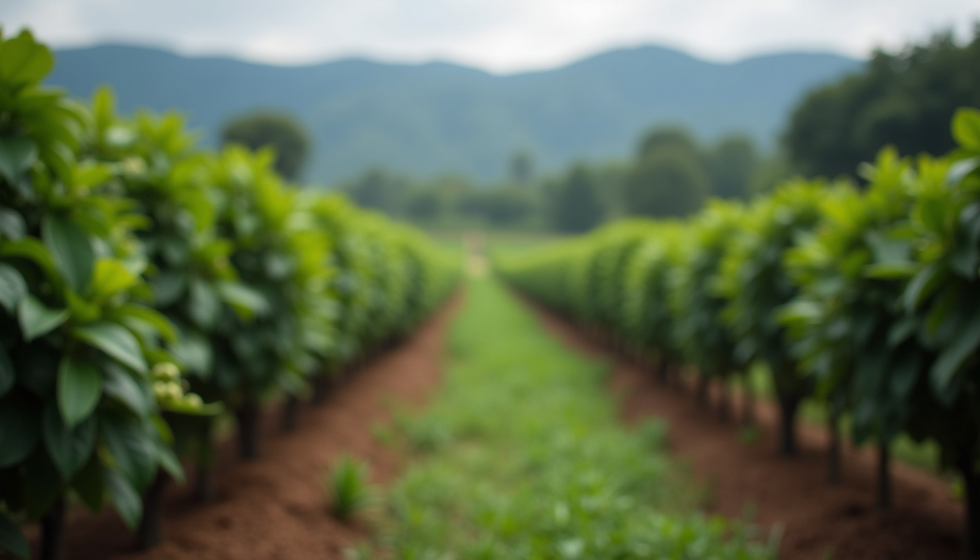How Precision Agriculture from Brazil Can Revolutionize African Farming Practices
- 2 days ago
- 4 min read

Overview
Brazil's agricultural evolution over the last five decades is an incredible success story. Once reliant on food imports, Brazil is now a major agricultural exporter, thanks to innovative precision agriculture practices. As Africa confronts serious agricultural challenges, could the lessons learned from Brazil guide African farmers towards similar success?
This blog post will examine how precision agriculture can transform farming practices in Africa by learning from Brazil's achievements. It will highlight effective techniques used in Brazil and assess how they can fit into the African context, particularly in light of the continent's pressing need for food production.
The Brazilian Agricultural Miracle
In the 1970s, the Cerrado region of Brazil was considered unfit for agriculture. Now, through groundbreaking practices and precision agriculture technologies, the region stands as one of the most productive agricultural areas worldwide.
Farmers in Brazil are harnessing tools like GPS-guided tractors, soil sensors, and data analytics. These technologies allow them to make precise decisions that boost their productivity. As a result, Brazilian farmers have recorded yield increases between 20% and 30%, while simultaneously conserving resources and minimizing waste.
This transformation exemplifies what is achievable through the smart application of technology.
Why Africa Needs This Now
Africa stands on the brink of an agricultural revolution. The continent's population is expected to double by 2050, creating significant pressure to increase food production. African farmers face challenges akin to those Brazil confronted decades ago: inconsistent soil quality, erratic rainfall, and the imperative to produce more with limited resources.
Fortunately, technological costs have plummeted. Where investments once reached millions, affordable smartphone applications and budget-friendly sensors are now available. This accessibility presents a unique opportunity for African farmers to embrace precision agriculture and enhance their productivity.
Precision Techniques Ready for African Adoption
1. Variable Rate Application
Variable rate application is a powerful technique that allows farmers to apply fertilizers only where needed. This targeted approach can reduce fertilizer expenses by 15% to 25%, leading to substantial savings. By understanding the nutrient requirements within specific field areas, farmers can optimize their inputs and increase yields.
2. Soil Mapping
Understanding land characteristics before planting is essential. Soil mapping gives farmers insights into soil composition, pH levels, and nutrient availability. For example, the use of soil sensors in Brazil has helped farmers select the best crops for their land, leading to increases in yields and reduced chemical use.
3. Weather-Based Irrigation
Water scarcity challenges many African regions. Weather-based irrigation systems optimize water use by relying on rainfall forecasts to determine the best watering times. This not only saves water but also helps crops withstand droughts, making it crucial for farmers aiming to enhance resilience.
4. Drone Monitoring
Drones are changing how farmers observe their fields. Equipped with high-definition cameras and sensors, drones can quickly detect pest problems, nutrient deficiencies, or other threats to crop health. For instance, a study found that early drone monitoring allowed farmers to reduce pesticide use by 30%, improving sustainability.
5. Yield Mapping
Yield mapping is crucial for understanding which field areas work best and why. By analyzing historical data, farmers can identify patterns linked to soil types and moisture levels. This helps them make informed planting decisions, leading to optimized productivity and resource use.
Real Success: The Mozambique Case
The real-world impact of precision agriculture in Africa is evident through the story of João Silva in Mozambique. He introduced precision methods to a 500-hectare farm. The results were stunning: fertilizer costs dropped by 30%, while yields soared by 25%. Remarkably, the farmer recouped his technology investment within a single season.
As the farm manager noted, "We stopped guessing and started knowing." This transition from uncertainty to data-informed decisions encapsulates the transformative potential of precision agriculture.
Overcoming Barriers to Adoption
Despite clear benefits, several barriers exist to adopting precision agriculture in Africa.
1. Access to Technology
Many African farmers lack access to the technology and infrastructure required for precision agriculture. Cooperation among governments and organizations is vital to improve availability and affordability of tools and training.
2. Education and Training
Farmers must be educated in using precision agriculture techniques effectively. Extension services and partnerships with agricultural colleges can equip them with essential knowledge and skills.
3. Financial Support
Smallholder farmers may find the initial investment in precision agriculture daunting. Innovative financing options like microloans and grants can help farmers overcome this hurdle, making technology adoption feasible.
The Role of Policy and Government Support
For precision agriculture to flourish in Africa, supportive policies are crucial.
1. Investment in Research and Development
Governments must prioritize agricultural research and development, enabling innovation in precision agriculture. Collaborating with universities can foster solutions tailored to local farmers' needs.
2. Infrastructure Development
Enhancing infrastructure—like rural roads and internet access—is vital for farmers to utilize precision agriculture technologies effectively.
3. Encouraging Public-Private Partnerships
Collaboration between public and private sectors can facilitate resource and expertise sharing, promoting widespread adoption of precision agriculture across the continent.
A Path Forward for African Agriculture
The accomplishments of precision agriculture in Brazil offer a blueprint for African farmers seeking to boost their productivity and sustainability. Techniques such as variable rate application, soil mapping, and drone monitoring can help farmers overcome challenges and realize their potential.
As Africa prepares for significant population growth, the urgency for innovative agricultural solutions is clearer than ever. Through proper support, education, and investment, precision agriculture can become the cornerstone of an agricultural transformation in Africa.
The journey ahead may be challenging, but the potential benefits improved food security, higher incomes, and sustainable farming make it imperative to act now. The future of African agriculture rests on these timely efforts.



